Accuphase E-480 Integrated Amplifier Review
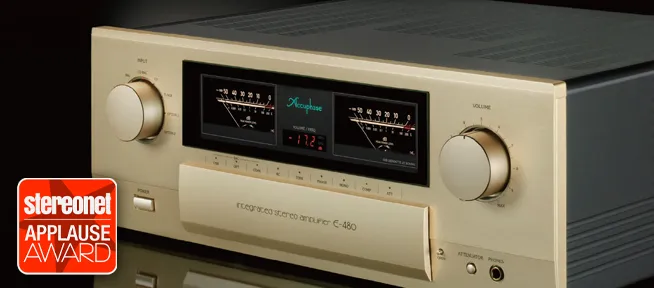
Eric Teh is charmed by this classy integrated amplifier from an esteemed Japanese brand…
Accuphase
E-480 Integrated Amplifier
£8,000
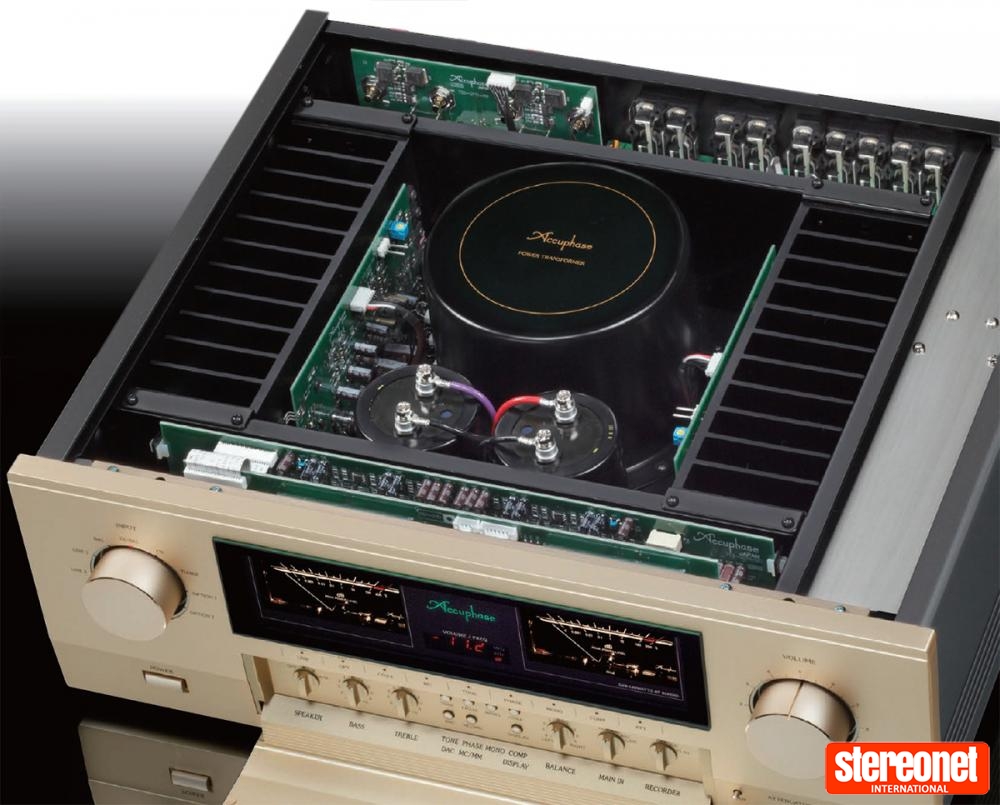
Accuphase Laboratory Inc of Japan is a venerable company that commands deep respect from audiophiles worldwide, especially in Asia, where it has a loyal following. Instantly recognisable by the champagne-coloured faceplates and prominently displayed power meters, Accuphase equipment is considered classic and timeless – almost heirloom-quality – equipment.
As a long-time owner of an A-36 Class A power amplifier, I can attest to both the outstanding sonic and build quality of Accuphase gear, as well as its bulletproof reliability. The £8,000 E-480 integrated stereo amplifier is the top Class AB integrated amplifier in the line-up. There's enough juice for almost any pair of loudspeakers with a claimed power of 180 watts per channel into an 8-ohm load and 260 watts into 4-ohms.
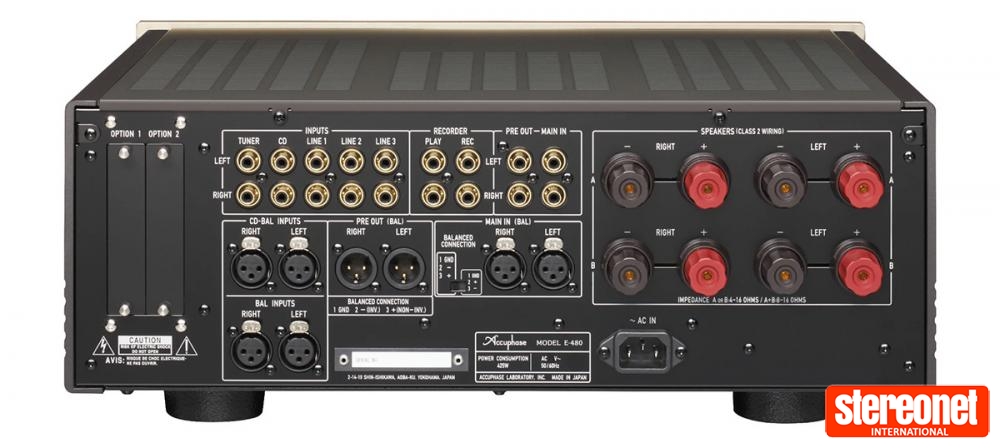
UP CLOSE
The preamplifier section utilises the company's own AAVA (Accuphase Analog Vari-gain Amplifier) volume control which attenuates levels by a combination of 16 V-I (voltage to current) converter amplifiers. A microprocessor controls the gain of each V-I amplifier to achieve up to 65,536 steps. An I-V converter then converts the current back into voltage. Most volume controls in the market are based on resistive element potentiometers that introduce distortion and inaccurate channel tracking. Accuphase claims that AAVA does not impair the circuit's signal-to-noise ratio or otherwise degrade sound quality. The power amplifier stage uses MOSFETs in a triple parallel push-pull configuration. Damping factor is said to be 600, which should result in very good control over low frequencies.
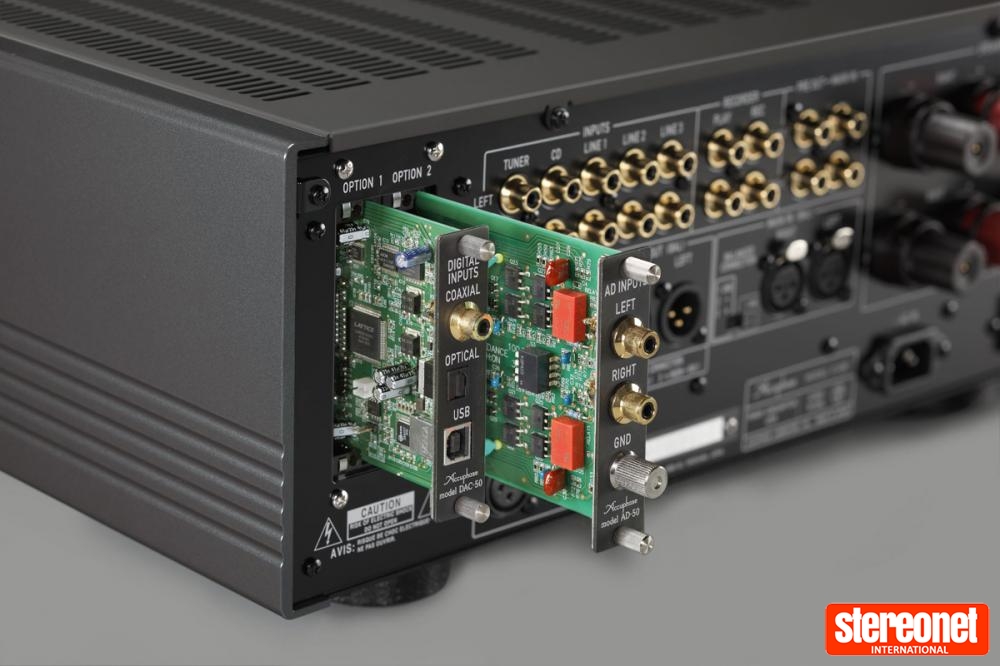
The E-480 also accepts three optional expansion cards that add a DAC, a phono stage (handling both MM and MC cartridges) or an additional line stage. I appreciate this approach as consumers do not need to pay for unnecessary features. The review sample did not come with any of the optional boards installed. Every inch of this amplifier oozes quality and looks and feels like it should last a lifetime. All knobs and selectors rotate with a smooth and silky feel, while the speaker binding posts are massively over-engineered jobs that clamp down tightly like a bench vice. Even the front panel door opens with a smooth and fluid-damped like motion.
Looking through the top vents, you can see a pair of soda-can sized electrolytic capacitors that are probably the largest I've ever come across in an amplifier of this size – 40,000uF, according to the spec sheet. Coupled with a large chassis and massive toroidal power transformer, you end up with a large and heavy amplifier. Vital statistics are 465x181x428mm and 24.6kg, so some care is required to manoeuvre this beauty onto its throne.
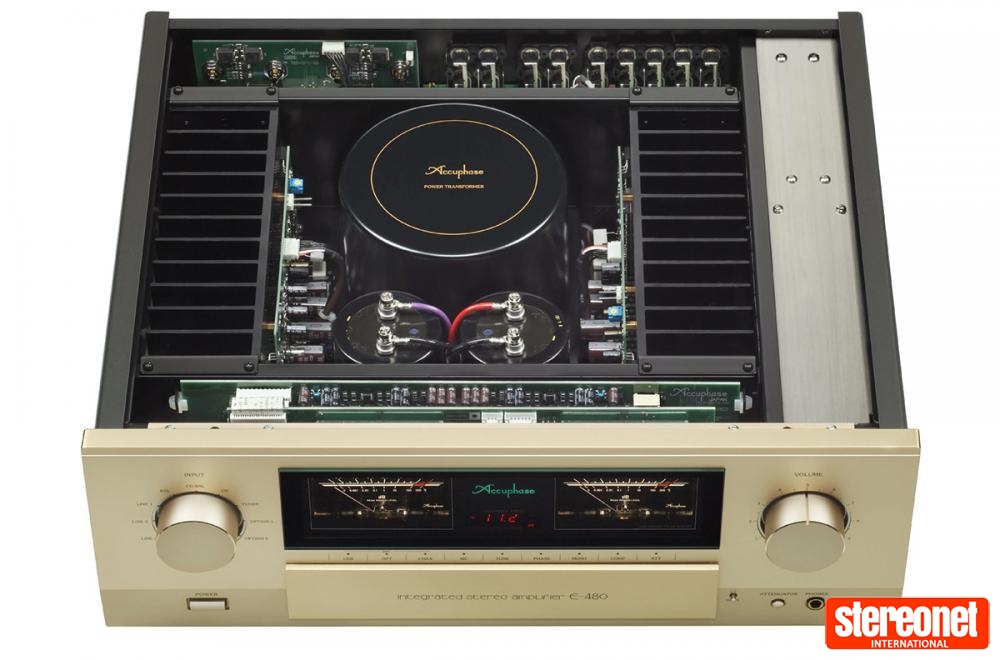
The E-480 opts for a clean look, with only the essential function controls and twin power meters visible on the front chassis. The front panel door drops down to reveal many functions, including a speaker selection switch, tone and balance controls, and phase. A display button switches off the power meters and digital volume level display. The people at Accuphase also programmed it to briefly display the volume level during adjustment even when the display is switched off. The headphone output has plenty of drive paired with my Beyerdynamic DT-880 headphones (250-ohm version). However, plugging in headphones does not mute the speaker outputs like most gear, so you have to switch off the speakers via the selector knob.
No issues were observed during the time I had with the E-480. The unit ran quite cool, with the heatsinks becoming only slightly warm to the touch. In comparison, my A-36 runs searingly hot! I partnered the E-480 with Tannoy Kensington GR and Vivid Audio Giya G4 loudspeakers, and it got along famously with both. These speakers can sound lightweight and bright with the wrong amplifier, but no such issues here. The balanced inputs have a noticeably superior sense of clarity, dynamics and control, so these should be used where possible over the single-ended inputs.
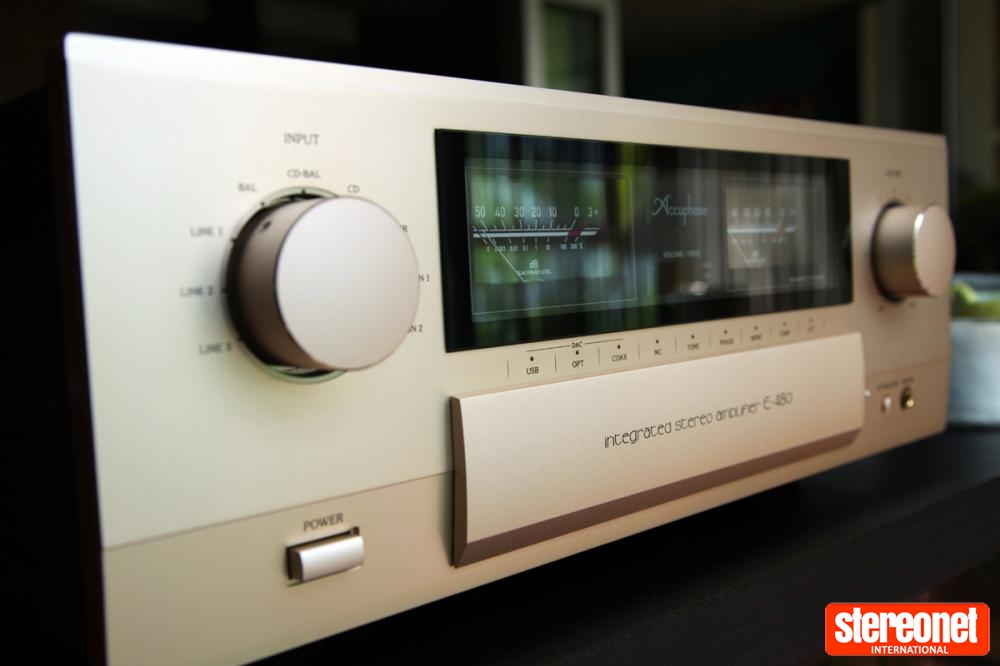
THE LISTENING
This luscious amplifier delivers music with a warm yet powerful presentation. You could argue that the E-480 almost sounds like a tube amp with solid-state control and power. Music is delivered with a glow that is very dimensional but hits hard on dynamic swings. My A-36 sounded much softer in comparison and with less impactful transients, although it had the edge in midrange purity.
Music flowed through the E-480 with a solid and full bass foundation. There was a grippy confidence coupled with a full mid/bass, whether it was timpani or double bass. If you like your favourite vocalist crooning on stage as opposed to performing right in front of you, the E-480 should be your cup of tea. Laid back, smooth and rich, the Accuphase reproduced vocals with an inviting and very easy to listen to quality. The tonal density here meant that some singers came across as more chesty than usual, and there was also a flattering of sibilant vocals.
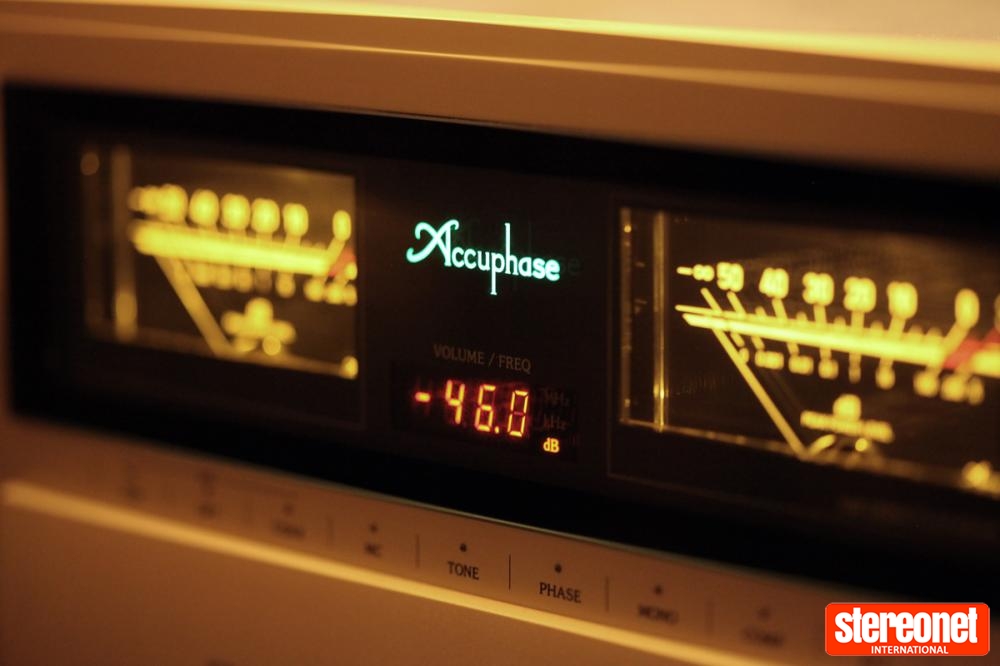
Some listeners have found that Accuphase amplifiers can sound rolled-off at the top end, but I didn't find this to be the case here, with bells and cymbals sounding crystal clear. There was plenty of air retrieved from the ambience of the recording venue, giving a realistic reproduction of acoustic space. Similarly, the Accuphase nailed soundstaging with precise placement of instruments and voices, both in terms of width and depth. Here, the E-480 sailed over most of the competition with a very palpable sense of dimensionality – you could clearly “see” each instrument, voice and the surrounding acoustic space. This is something that I usually associate with good vacuum tube amplifiers, so top marks here!
The Accuphase is like a fine microscope, capable of outstanding retrieval of detail from a recording. However, the clarity of the window depends on the bass content of the music. Bass-heavy tracks tend to let low frequencies dominate the performance, obscuring the high frequencies in particular. From my observation, this also contributed to how dynamics are perceived. The Accuphase could sound slow and ponderous on Electronic Dance Music, yet sound fast and tight on orchestral works. This could explain why some listeners have the perception that Accuphase amplifiers can sound slow?
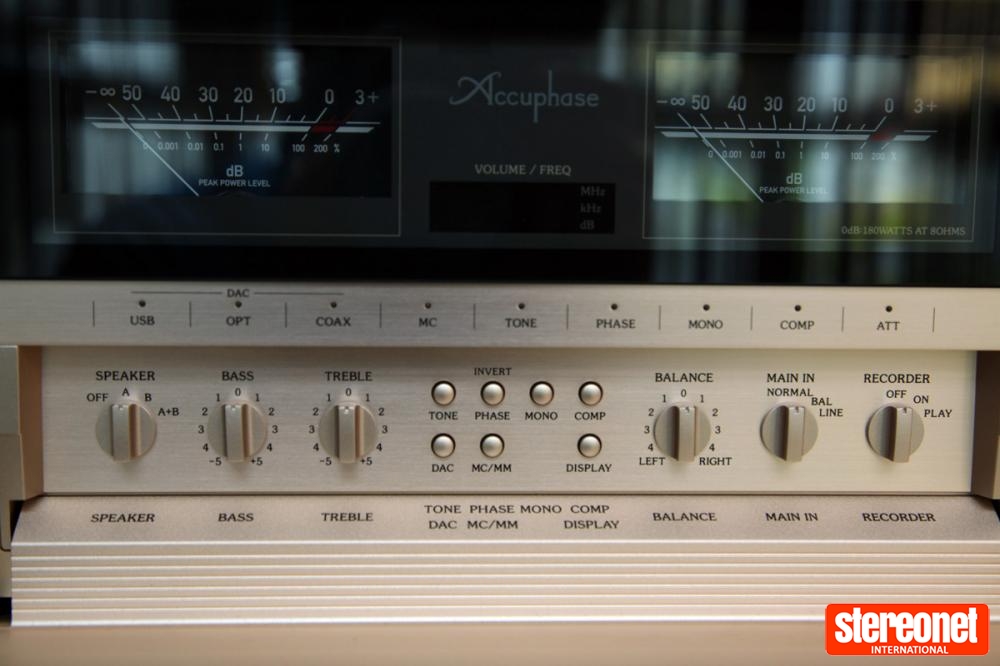
Jacques Loussier's Plays Bach is a delightful recording with a bouncy and fast tempo between piano, bass and drums. The E-480 impacted the timing and speed here, with some of the fast tracks sounding a bit too slow. Contrast that to Dire Straits' Telegraph Road, which has less low-frequency information. Here the band was able to slowly build up the atmosphere and deliver the low-frequency impact when required.
September in Montreal by Anne Bisson starts with a piano solo before the drummer joins in. Anne's voice has a light and airy quality that's a delight to listen to. While the Accuphase gave noticeable impact to the kick drum and low piano notes, it also gave vocals a sweeter and heavier tonality. Depending on your taste, this could be too much of a good thing, and here it weighed down the midrange.

Hans Zimmer's Live in Prague is a lively and atmospheric recording with plenty going on. Coupled with the atmosphere from the audience and concert venue, and you have a magical performance that requires a fine audio system to reproduce. The E-480 was in its element here, with good separation, placement and handover from the various instruments to the full orchestra and choir. The ample power reserves of the Accuphase handled the power and scale required without even breaking a sweat. With your eyes closed, this came across as so realistic that it felt like I was actually there.
Kind of Blue by Miles Davis is a classic audiophile recording. The Accuphase did an outstanding job on tempo, detail and ambience. However, the laid back voicing took out a bit of bite and rasp from Miles' trumpet playing and the saxophones. In this respect, the Accuphase always played nice and preferred being an amiable host.
THE VERDICT
 Overall, I very much enjoyed my time with the E-480. It handled most of my musical diet with aplomb, always sounding engaging, detailed and confident. I did wish that it had more bite and better timing when listening to grittier, faster tempo programme material. Other than that, the Accuphase comes with the strongest of recommendations. It's a really high-quality component that delivers a powerful yet refined sound. Always warm and inviting, this musical integrated amplifier guarantees a relaxing listening experience.
Overall, I very much enjoyed my time with the E-480. It handled most of my musical diet with aplomb, always sounding engaging, detailed and confident. I did wish that it had more bite and better timing when listening to grittier, faster tempo programme material. Other than that, the Accuphase comes with the strongest of recommendations. It's a really high-quality component that delivers a powerful yet refined sound. Always warm and inviting, this musical integrated amplifier guarantees a relaxing listening experience.
For more information visit Accuphase
Eric Teh
Tinkering since he was a wee little Audiophile, Eric also collects fountain pens and watches. He is on a never-ending journey to find the meaning to life, the universe and everything.
Posted in: Amplifiers | Integrated Amplifier | Applause Awards | 2021 | Hi-Fi
JOIN IN THE DISCUSSION
Want to share your opinion or get advice from other enthusiasts? Then head into the Message
Forums where thousands of other enthusiasts are communicating on a daily basis.
CLICK HERE FOR FREE MEMBERSHIP
Trending
applause awards
Each time StereoNET reviews a product, it is considered for an Applause Award. Winning one marks it out as a design of great quality and distinction – a special product in its class, on the grounds of either performance, value for money, or usually both.
Applause Awards are personally issued by StereoNET’s global Editor-in-Chief, David Price – who has over three decades of experience reviewing hi-fi products at the highest level – after consulting with our senior editorial team. They are not automatically given with all reviews, nor can manufacturers purchase them.
The StereoNET editorial team includes some of the world’s most experienced and respected hi-fi journalists with a vast wealth of knowledge. Some have edited popular English language hi-fi magazines, and others have been senior contributors to famous audio journals stretching back to the late 1970s. And we also employ professional IT and home theatre specialists who work at the cutting edge of today’s technology.
We believe that no other online hi-fi and home cinema resource offers such expert knowledge, so when StereoNET gives an Applause Award, it is a trustworthy hallmark of quality. Receiving such an award is the prerequisite to becoming eligible for our annual Product of the Year awards, awarded only to the finest designs in their respective categories. Buyers of hi-fi, home cinema, and headphones can be sure that a StereoNET Applause Award winner is worthy of your most serious attention.





